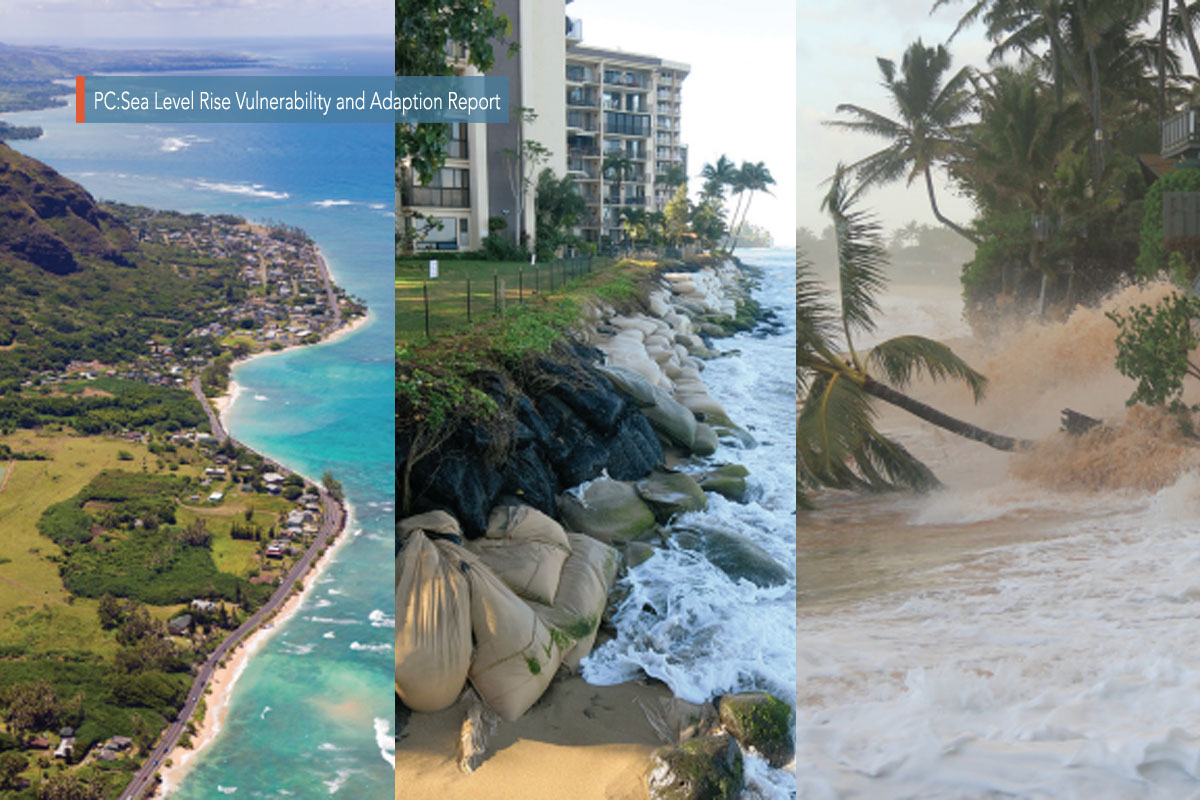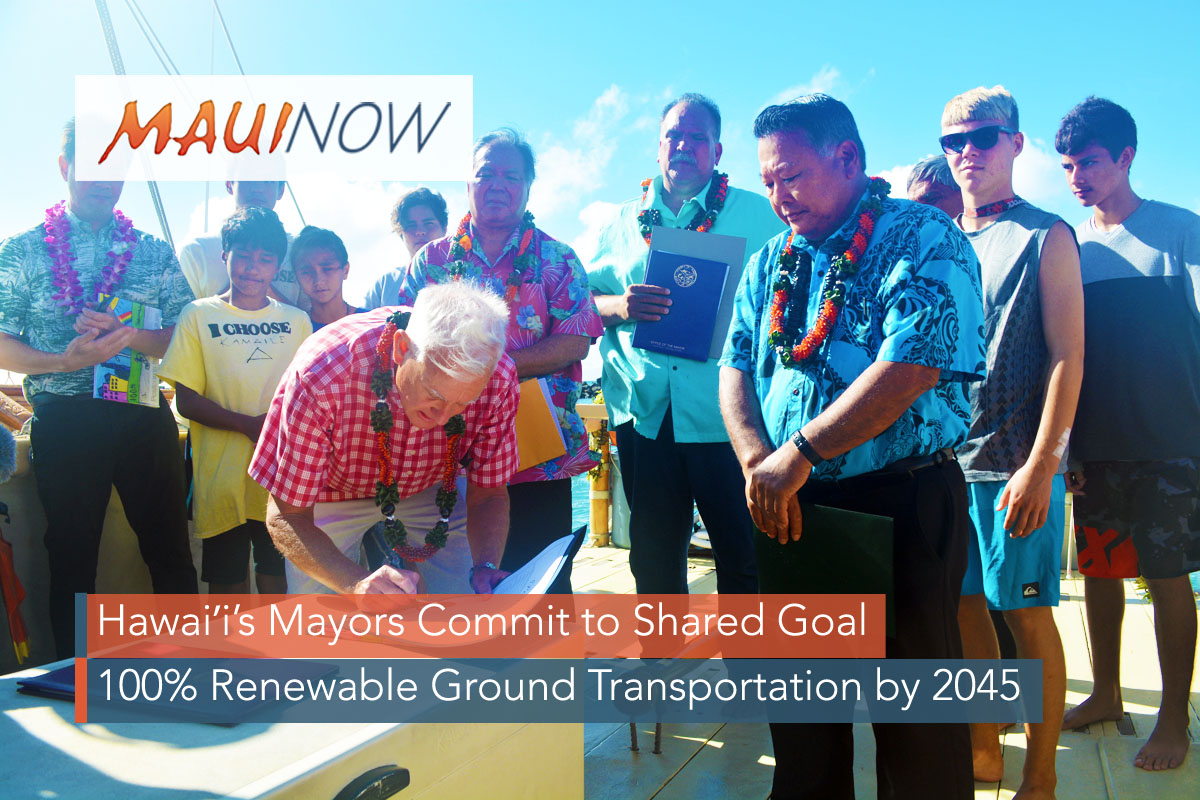Hawai‘i’s Mayors Oppose Repeal of Clean Power Plan
Leaders from the City and County of Honolulu, Hawaiʻi County, Maui County, and Kauaʻi County have joined 226 mayors from 44 states and territories, representing nearly 50 million Americans to oppose the Trump Administration’s proposed repeal of the Clean Power Plan.

Sea Level Rise Report released.
Maui County Mayor Alan Arakawa, Honolulu Mayor Kirk Caldwell, Hawaiʻi County Mayor Harry Kim and Kauaʻi County Mayor Bernard P. Carvalho Jr. all signed a letter in opposition to the Environmental Protection Agency’s proposed Repeal of Carbon Pollution Emission Guidelines for Existing Stationary Sources: Electric Utility Generating Units.
“The benefit of the Clean Power Plan is twofold: Providing direct health benefit from avoiding air pollutants from combustion, along with reducing greenhouse gas emissions,” said Mayor Arakawa. “It is gratifying to stand in solidarity with so many Mayors at the local level, where power plants pollute, and continue down the path of a cleaner future.”

Courtesy photo.
Hawaiʻi is the only state that entirely supports the Climate Mayors network through its four mayors’ participation. In signing this letter opposing repeal of the CPP, they are joined by other members of the Climate Mayor’s network, which includes Los Angeles, Houston, Portland, New York, and Puerto Rico.
“The Clean Power Plan is a fundamental building block in the nation’s response to climate change, and was a hallmark achievement of the EPA under the Obama Administration,” said Mayor Caldwell. “The Clean Power Plan encourages communities to embrace a future that will lead to new opportunities, cutting edge technology and higher paying jobs. This is a vision the City and County of Honolulu has embraced and is already paying dividends through the sound planning for new infrastructure.”
With over a third of global greenhouse gas emissions coming from the electricity sector, the four mayors recognize that the Clean Power Plan is essential to the United States’ ability to curb future GHG emissions and live up to its commitments under the Paris Agreement.
All four mayors previously joined Governor David Ige on June 5, 2017 to commit to uphold the Paris Agreement just days after President Trump announced he would withdraw the United States from the international accord to address global warming.
“It is important for the federal government to lead our transition to a cleaner, healthier, more affordable, and more resilient energy future,” said County of Hawaiʻi Mayor Kim. “The Clean Power Plan is a step in the right direction and is aligned with local efforts to reduce greenhouse gases, improve energy efficiency, and use renewable energy sources. This is a mission that we must all be a part of.”
Signing the letter signals Hawaiʻi’s continued commitment to transition away from dependence on fossil fuels and reinforces a 2015 state law that requires 100% of Hawaiʻi’s electricity to be generated by renewable sources by 2045. Hawaiʻi’s 2045 goal was the nation’s first such benchmark.
“Kauaʻi County is working hard to reduce our greenhouse gas emissions because we understand the cost of inaction. Everyone – at all levels of government, from small towns, to states, all the way up to our federal government, needs to be a part of this,” said Mayor Carvalho Jr. “The Clean Power Plan is a key piece of that effort across the US.”
The actions announced today by the chief executives of the four counties are in alignment with the state of Hawaiʻi’s recent commitment to the goals of the Paris Agreement that seeks to reduce GHG emissions and keep global warming below 1.5 degrees Celsius.
Sea level rise was also identified as a concern. Coastal erosion recently destroyed part of a historic cemetery on Maui and caused a bike path on the North Shore of Oʻahu at Sunset Beach to partially collapse. According to the recently published Hawaiʻi Sea Level Rise Vulnerability and Adaption Report, the expected future sea level rise is estimated to cost $19 billion in “loss of land and structures” along with 6,500 flooded structures, 38 miles of flooded major roads, and 19,800 displaced people.
On December 12, 2017, the four mayors came together on the Polynesian voyaging canoe Hōkūleʻa in committing to transform Hawaiʻi’s public and private ground transportation to 100% renewable fuel sources by 2045.










